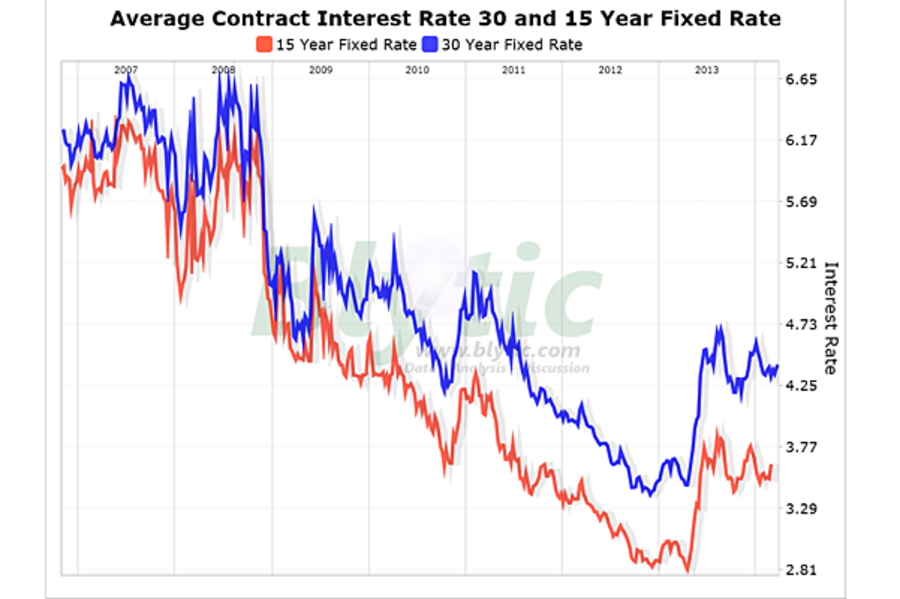Mortgage rates climb to 4.41 percent
Loading...
The Mortgage Bankers Association (MBA) publishes the results of a weekly applications survey that covers roughly 50 percent of all residential mortgage originations and tracks the average interest rate for 30 year and 15 year fixed rate mortgages as well as the volume of both purchase and refinance applications.
The purchase application index has been highlighted as a particularly important data series as it very broadly captures the demand side of residential real estate for both new and existing home purchases.
The latest data is showing that the average rate for a 30 year fixed rate mortgage (from FHA and conforming GSE data) increased 2 basis points to 4.41% since last week while the purchase application volume increased 1% and the refinance application volume declined 3% over the same period.
The following chart shows the average interest rate for 30 year and 15 year fixed rate mortgages since 2006 as well as the purchase, refinance and composite.





